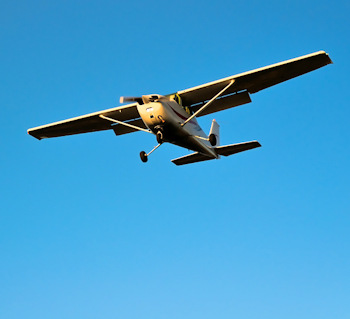Subscriber question:
"What is a stabilized approach? My instructor refers to this often."
- Bruce M.
Tom:
 “Even professional pilots disagree on precisely what is meant by a stabilized approach. Airline safety training devotes most of its attention to what is not a stabilized approach, rather than what is. The FAA’s Aeronautical Information Manual is equally vague on a precise definition.
“Even professional pilots disagree on precisely what is meant by a stabilized approach. Airline safety training devotes most of its attention to what is not a stabilized approach, rather than what is. The FAA’s Aeronautical Information Manual is equally vague on a precise definition.
There is general agreement, however, that flying a stabilized approach makes a safe landing more likely, and a destabilized approach is a frequent factor in aircraft crashes. So let’s first look at what is an unstabilized approach, and derive a definition of stabilized approach that increases safety and is useful in the general aviation cockpit.
An unstabilized approach is one in which one or more of the airplane’s indicated airspeed, pitch attitude, flap and landing gear position—the airplane’s configuration—and/or glidepath, changes in the final moments of the approach. Changes to any of these variables close to the ground will make it harder for the pilot to guide the aircraft to a smooth and accurate touchdown. It will take greater skill and timing than would otherwise be necessary to smoothly land in the runway’s touchdown zone. The airplane may land short or float and land long; it may bounce, stall, or enter a pilot-induced oscillation. Any one of these scenarios can be disastrous to the aircraft and its occupants.
OK, now we know what unstabilized means. This permits creating a usable definition of a stabilized approach, optimized for the general aviation pilot. A stabilized approach is one in which the airplane is on speed, in configuration and on glidepath on final approach from, say, about 500 feet above the runway threshold height until the pilot begins the landing flare.
You may have noticed that I did not mention the airplane’s power setting. Power should be at or near a target that results in the target airspeed in the landing configuration. But power is the one variable: use power changes to maintain glidepath while all other variables are fixed.
Safe, predictable and low-workload landings result from establishing the landing airspeed, aircraft configuration, and glidepath control. If the airplane is not stabilized, do not attempt to salvage the landing. Go around, re-enter the traffic pattern or instrument approach, and be sure you are stabilized the next time around.”
On final approach, what is your target altitude (AGL) for having the airplane properly stabilized?
